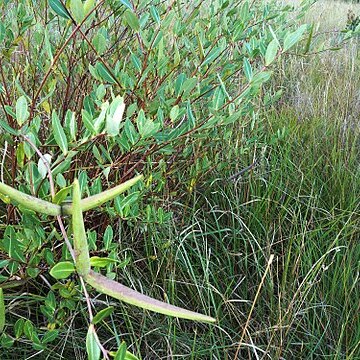Shrub, up to 2 m high. Stems much branched, long and slender, reddish brown. Leaves petiolate; blade elliptic to oblong, 25-50 x 6-18 mm, apex acuminate; petioles 1-2 mm long. Flowers: few in clustered inflorescences; corona lobes subterete or clavate; corolla tube 1-4 mm long, lobes oblong or linear-oblong, < 4 mm long, yellow, white or pale greenish yellow; Sep.-Apr. Fruit a follicle.
Shrub, up to 1.5 m high. Leaves narrowly elliptic to narrowly obovate, acuminate, petioles 1-2 mm long. Corolla lobes shorter than 4 mm, oblong or linear-oblong. Corona lobes subterete or clavate. Flowers yellow, white or pale greenish yellow.

